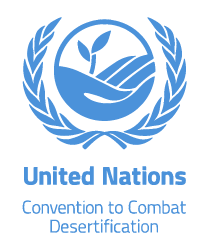Location
The United Nations Convention to Combat Desertification in Those Countries Experiencing Serious Drought and/or Desertification, Particularly in Africa (UNCCD) is a Convention to combat desertification and mitigate the effects of drought through national action programs that incorporate long-term strategies supported by international cooperation and partnership arrangements.
Members:
Resources
Displaying 56 - 60 of 586Adoption of farmer managed natural regeneration in Senegal. Included in Restoring African Drylands
Valuable lessons can be learned from smallholder farmers who have successfully protected and regenerated tree cover across agricultural landscapes in Senegal, with minimal reliance on tree nurseries, seedling distribution or tree planting. In the process, they have restored soil fertility to sustainably increase agricultural production.
Successful landscape restoration in Abreha We Atsbeha watershed, Tigray, Ethiopia. Included in Restoring African Drylands
Key success factors
There were several reasons for the success of the restoration initiative.
• Implementation had the active participation of the local community; i.e., it was community- led restoration.
• Restoration produced short- and long-term economic and environmental benefits.
• It systematically included women, girls and youth in restoration activities.
• The former village leader had the leadership capacity to mobilize the local community.
Sustainability Index for Landscape Restoration
Restoration is more complex than just planting trees. It requires that farmers, rural communities, businesses, and government agencies—all with different interests—unite behind a shared vision. Establishing common goals and measuring progress facilitates deeper collaboration among diverse actors.
Climate-smart village approach: communities at the heart of restoration in Senegal. Included in Restoring African Drylands
The climate-smart village approach created enthusiasm and commitment from farmers in seeking solutions to the problems and constraints that they themselves identified. The approach also involved strengthening the capacity of technical staff to use new tools, and to understand and support the new methods, with complementary finance to support the changes.
Two decades of farmer managed natural regeneration on the Seno plain, Mali. Included in Restoring African Drylands
The adoption of FMNR increased by 50% over 20 years; about 90% of all farmers now encourage natural regeneration on the land that they manage. The key to success is having local institutions that are respected and effective. The experience in Bankass shows that reforestation rates of at least 250 trees per hectare can be achieved by farmer managed natural regeneration on Sahelian agricultural lands, recreating an agroforestry parkland at a fraction of the cost of establishing conventional plantations.


